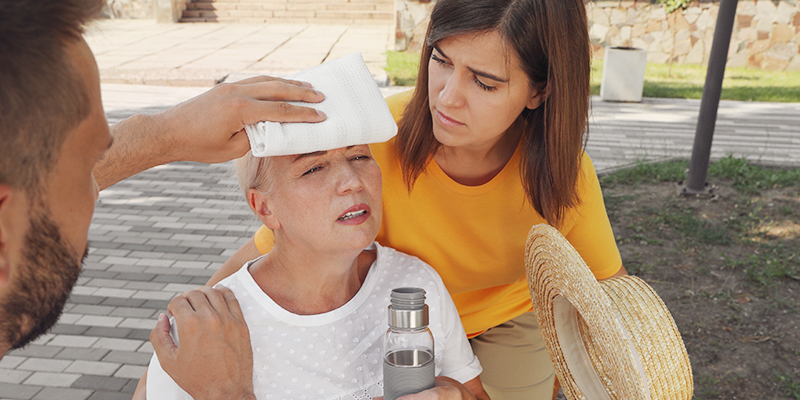
July 11, 2024
From daily weather reports to natural disasters, local stations and broadcast networks bring communities across the country the information they need to stay safe and healthy as the seasons change. They provide this powerful service with a lifeline role in our nation's emergency infrastructure, trusted local personalities and critical support to help navigate communities through disaster recovery.
As Hurricane Beryl moved into the Houston, Texas, area, destroying property and taking several lives, broadcasters stepped up to provide the emergency alerts, wall-to-wall coverage and community support their viewers and listeners rely on. "I camped out in my office," said Urban One Houston Operations Manager Travis Moon. “This is radio in its purest form. It’s what listeners expect."
“All Audacy Houston stations have had live personalities updating our listeners on the storms, doing check-ins with our local meteorologists and providing updates of urgent news," added Melissa Chase, vice president, Radio Programming, Audacy Houston. “In addition to on-air, we’ve been answering phone calls and going live on our social media platforms."
iHeartMedia station KTRH 740 provided long-form coverage on air, KTRH podcasts and KTRH social media accounts, including updates, predictions, closures, outages, community discussions and interviews with local officials. They have continued to provide information as power is restored to the area.
ABC owned-and-operated ABC 13 Eyewitness News in Houston, Texas, interviewed residents in a local community that “looked like a war zone" after the storm passed. "As soon as we are done here, we are going to make our way around because other neighbors have damage," resident Dee Stephens told the station as neighbors helped her family remove a tree that fell on her house.
Graham Media Group’s Click 2 Houston spoke to staff at a Whataburger restaurant helping residents get food in the hurricane’s aftermath, and crowdsourced a list of other restaurants that were staying open as power is still being restored to much of the area.
With recovery efforts underway, stations across the country rallied as well. Hearst Television’s WPBF 25 News profiled American Red Cross volunteers from their area deployed to Texas to help families displaced by Beryl. "Any time we could get hit with a hurricane in Florida, and I would like other people to come and help us if we needed it," volunteer Joe Vizzi said.
"Heat is the number one weather-related killer, not just in Arizona but across the nation," began a Heat Awareness Week story from Scripps Local Media’s ABC 15 Arizona this May. “According to the National Weather Service, heat kills more people than tornadoes, floods, hurricanes, earthquakes and lightning combined."
As temperatures have risen across the country, broadcasters are profiling the affected communities, the impacts of extreme weather and providing resources to keep cool.
NBC News Connecticut published a national story covering the impact of extreme heat on transportation infrastructure, including railways, roads and aviation, and pulled in reporting from affiliates to provide perspectives from New York to Wyoming. "Our infrastructure was not built for the climate of the future," said Radley Horton, a professor at Columbia University's Climate School and a member of the New York City Panel on Climate Change. "A lot of our infrastructure, at this point, is also very old. Some of it is beyond its intended lifetime."
Across the country, local stations have explored different impacts of heat waves in their areas. Nexstar Media Group’s 8 News Now in Las Vegas reported on the challenges faced by the city’s homeless population as temperatures climbed to a new all-time high of 120 degrees. Cox Media Group’s Boston 25 News interviewed local summer camps about their adjustments to high heat. And in Portland, Ore., iHeartMedia station JAM’N 107.5 shared an advisory about protecting trees, an important source of shade, clean air and quality of life, from the impacts of extreme heat.
ABC’s Good Morning America covered the symptoms and treatments of heat stroke in a piece about Phoenix, Ariz., emergency responders’ work responding to extreme heat as heat-related calls and deaths rise.
Fan drives are a practical way local stations help keep their communities safe during the hot summer months. Fran’s Fans, the long-running fan drive from Wilmington, N.C., station WECT 6, owned by Gray Television, broke its record by collecting 3,100 fans for neighbors in need.
More than 2.47 million American jobs depend on broadcasting, and the local broadcast radio and television industry - and the businesses that depend on it - generate $1.17 trillion annually for the nation's economy.